Daocheng Yading Scenic Area is located in Shangri-La Town, Daocheng County, Ganzi Tibetan Autonomous Prefecture, Sichuan Province. It is a national nature reserve and a national 5A-level tourist attraction. The altitude of the scenic area ranges from 2,900 meters (at the mouth of the Gongga River) to 6,032 meters (Xiannairi Peak), and it is situated in the middle section of the Hengduan Mountains on the Qinghai-Tibet Plateau. The scenic area preserves an intact original landscape, featuring snow-capped mountains, canyons, lakes, meadows, and ancient glacial relics. It is known as "the Last Shangri-La" and "the Last Pure Land on the Blue Planet". Covering a total area of 1,072.3 square kilometers, its core area is relatively large, encompassing numerous natural landscapes and ecological zones. Most buildings in the scenic area are of Tibetan style, such as the Chonggu Monastery and other temple structures, which bear strong characteristics of religious culture.
History and Culture
Daocheng is an area where almost everyone practices religion. Tibetan Buddhism has a long history and profound influence here, with a presence of over a thousand years. The daily life, birth, aging, illness, death, marriage, and funeral customs of local farmers and herdsmen are closely linked to religion. Daocheng has a complete range of Tibetan Buddhist sects, including the Kagyu Sect (White Sect), Gelug Sect (Yellow Sect), Sakya Sect (Flower Sect), Nyingma Sect (Red Sect), and Bon Sect.
In 1928, Joseph Rock, an American explorer and botanist, visited Daocheng Yading twice. He collected animal and plant specimens, drew maps, and wrote the article "Gongga Ling Shambhala, a Sacred Land of Paradise", which was published in the American magazine National Geographic. This brought great fame to Daocheng Yading in the West and earned it the title of "the Last Shangri-La". In 1933, British writer James Hilton was inspired by Rock's exploration stories in Yunnan and Tibet and wrote the novel Lost Horizon. Since then, "Shangri-La" has become a symbol of a paradise on earth.
Major Attractions
Xiannairi Peak
Xiannairi Peak is the highest among the three major peaks in the Yading Scenic Area and the northern peak of the "Three Guardian Snow Mountains", with an altitude of 6,032 meters. Surrounded by glacial erosion peak forest landforms, it combines high mountains, lakes, glaciers, and forests into a stunning landscape, making it a paradise for photographers.
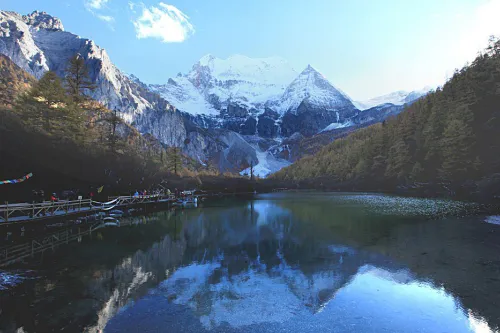
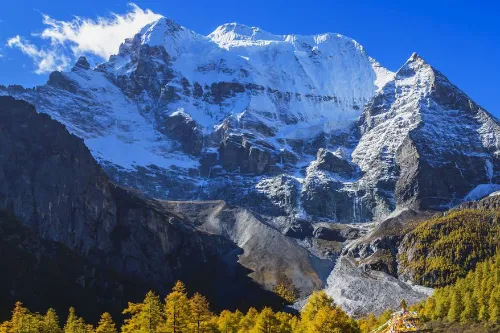
Yangmaiyong Peak
In Tibetan, "Yangmaiyong" means "Manjushri Bodhisattva". It is the southern peak of the Three Guardian Snow Mountains in Yading, with an altitude of 5,958 meters and ranks first among the three guardians. The peak resembles a quiet, dignified, and pure maiden—white, lofty, sacred, and solemn. The surrounding natural landscape is just like a paradise on earth.
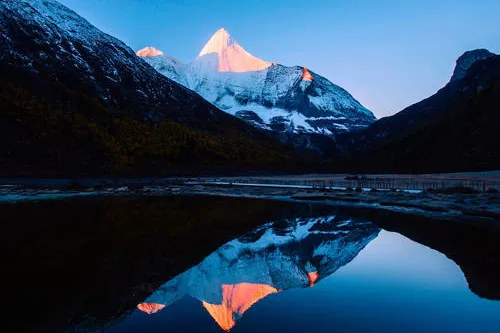
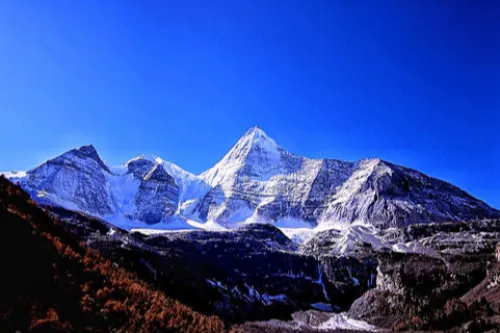
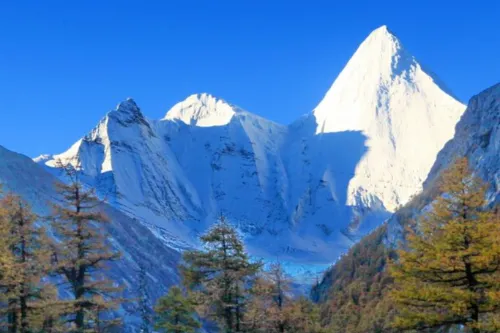
Xianuoduoji Peak
Xianuoduoji Peak has an altitude of 5,958 meters, and its name means "Vajrapani Bodhisattva" in Tibetan— a deity in Buddhism who upholds justice and combats evil. The snow-capped peak exudes a vivid and imposing presence that leaves a deep impression. At the foot of the snow mountain lies Luorong Pasture, where Joseph Rock once resided.
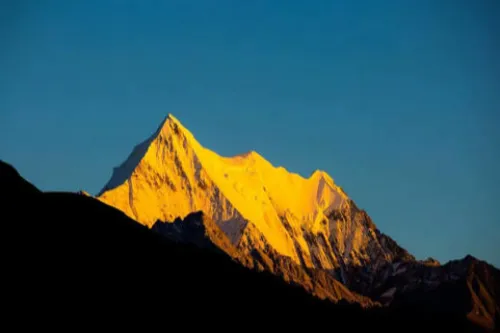
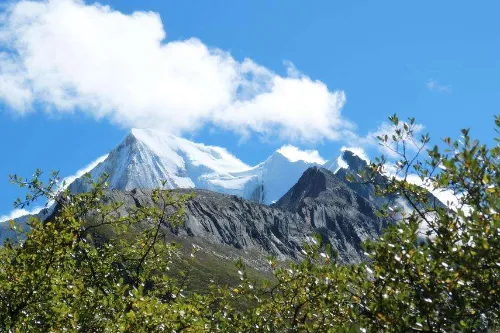
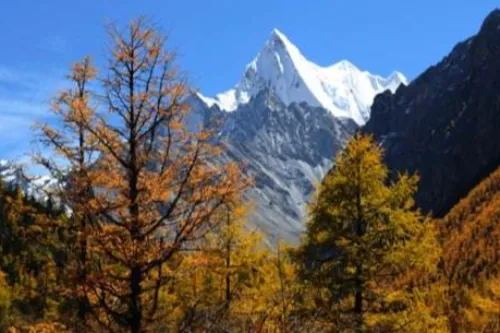
Chonggu Monastery
Chonggu Monastery is located at the foot of Xiannairi Sacred Mountain, at an altitude of 3,880 meters. The original monastery was severely damaged, and its construction date cannot be verified. The current monastery has a two-story building: the first floor serves as guest rooms and lamas' quarters, while the second floor is a scripture hall housing a statue of Sakyamuni Buddha.
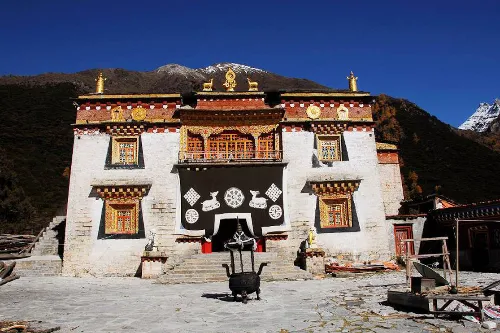
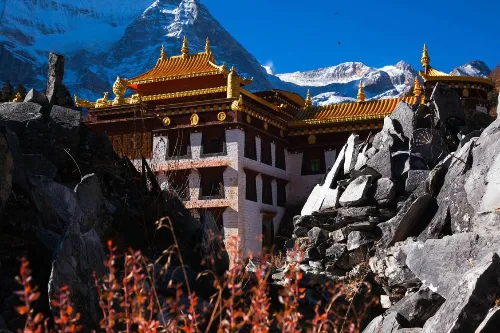
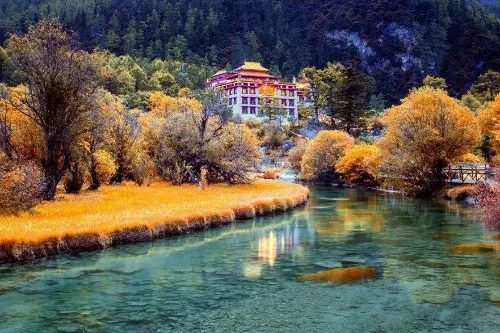
Chonggu Meadow
Chonggu Meadow is a natural "potted landscape" composed of grasslands, forests, streams, and mani piles, at an altitude of 3,900 meters. Standing here, visitors can enjoy a full view of Xiannairi Peak and Xianuoduoji Peak. It is part of a large glacial U-shaped valley (the mouth of the U-shaped valley) and one of the filming locations for the movie I Belonged to You. Additionally, it is a necessary stop on the way to Chonggu Monastery, the foot of Xiannairi Peak, Shengshui Gate, and Luorong Pasture.
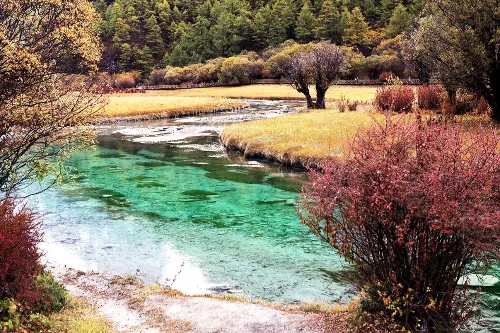
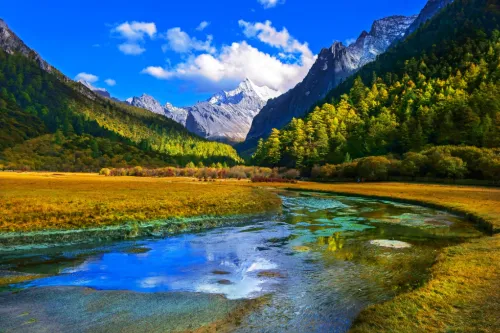
Luorong Pasture
Luorong Pasture, at an altitude of 4,150 meters, is a grazing land for local Tibetan herdsmen. Backed by the three sacred mountains, the Gongga River flows through the pasture. Streams gurgle through the forests, flocks of birds chirp, and the pasture huts create a harmonious scene—making it the best spot to view the three main snow-capped mountains.
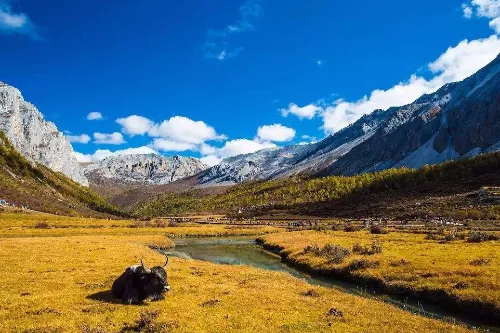
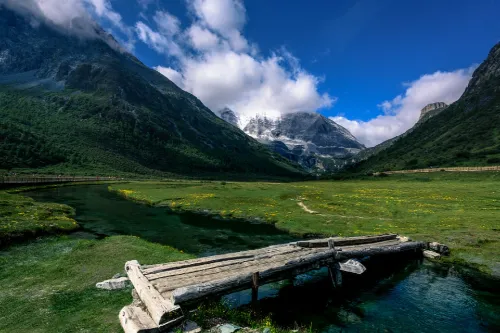
Milk Sea (Luorong Co)
Milk Sea, also known as Luorong Co, is located in a col at the foot of Yangmaiyong Sacred Mountain, at an altitude of 4,500 meters. It is one of the sacred lakes in the Yading area. This small, drop-shaped ancient glacial lake has clear blue water, surrounded by snow-capped mountains. A circle of milky white sediment around the lake's edge gives it its name.
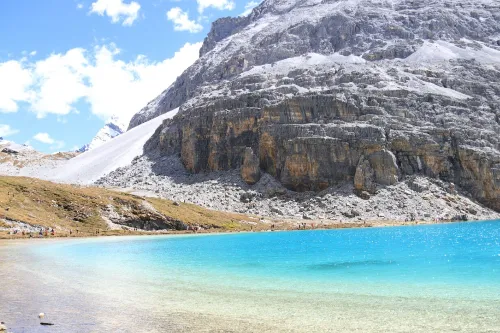
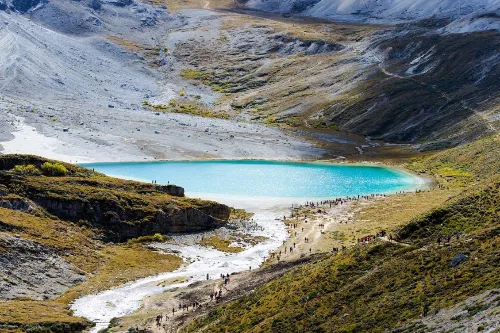
Five-Color Sea (Mudi Co)
Five-Color Sea, known as Mudi Co in Tibetan, is located above Milk Sea, between Xiannairi Peak and Yangmaiyong Peak, at an altitude of 4,600 meters. It gets its name from the five different colors reflected on its surface when sunlight shines on the water. The lake is circular with clear water and is regarded as a sacred lake by locals, who believe it can "reveal the past and predict the future".
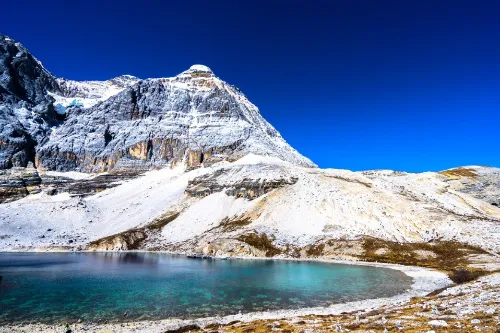
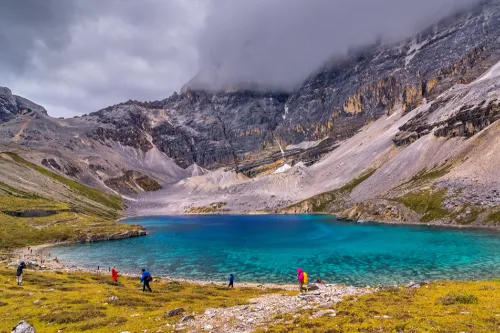
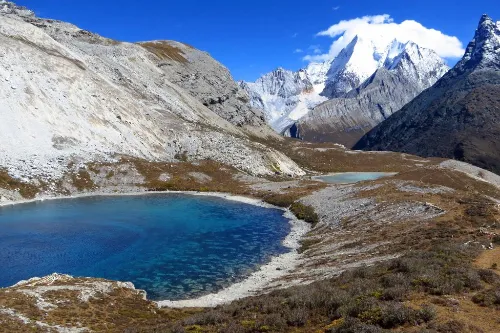
Pearl Sea (Zhuoma La Co)
Pearl Sea, called Zhuoma La Co in Tibetan, is a lake formed by melted snow from Xiannairi Peak. It sits at an altitude of approximately 4,100 meters and covers an area of about 0.1 square kilometers. Nestled in the dense forest, Pearl Sea shines like an emerald inlaid on a lotus throne, presenting a delicate and beautiful scene.
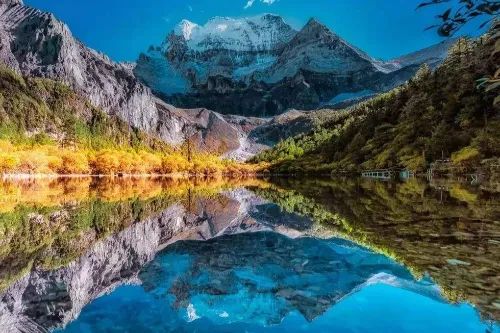
Tour Routes
Short Route: Chonggu Monastery → Chonggu Meadow → Pearl Sea. This route is relatively easy, suitable for visitors with average physical strength, and offers views of Xiannairi Snow Mountain and Pearl Sea.
Long Route: Luorong Pasture → Milk Sea → Five-Color Sea. This route is more physically demanding but rewards visitors with breathtaking views of Yangmaiyong Snow Mountain, Xianuoduoji Snow Mountain, and beautiful alpine lakes. Visitors can choose to hike or rent horses at Luorong Pasture to reach the destinations.
Travel Tips
- Take preventive measures against altitude sickness in advance, and prepare relevant medications and oxygen supplies.
- The temperature difference between day and night in the scenic area is significant. Even in summer, bring warm clothing such as down jackets and hardshell jackets.
- Choose appropriate footwear. Since long-distance hiking is required, waterproof and non-slip hiking shoes are recommended.
- When taking the long-distance route, you can rent a horse based on your physical condition. However, the number of horses is limited, so advance reservation is necessary.
- Respect the local religious beliefs and customs, and do not violate taboos arbitrarily.
Important Notes
- Smoking and littering are strictly prohibited in the scenic area to protect the environment.
- Do not enter undeveloped areas without permission to avoid potential dangers.
- In high-altitude areas, avoid strenuous exercise. If severe altitude sickness symptoms occur, seek medical attention or go down the mountain promptly.
- The weather in the scenic area is changeable. Carry rain gear with you and take sun protection measures, as ultraviolet radiation is strong in plateau areas.
- If you want to take photos of local Tibetan residents, obtain their consent first to respect their right of portrait.
Transportation
- By Air: You can first arrive at Daocheng Yading Airport, then take an airport bus or a chartered car to the scenic area.
- By Bus: There are long-distance buses from Chengdu and other cities to Daocheng. You can also choose to take a chartered car or a shared ride, and enjoy the scenery along the Sichuan-Tibet Line.
- Self-Driving: You can drive to Daocheng Yading and arrange your itinerary freely. However, pay attention to road conditions and weather, and drive cautiously especially when traveling in plateau areas.
Opening Hours
Daocheng Yading Scenic Area is usually open from 8:00 a.m. to 6:00 p.m. The specific opening hours may be adjusted according to seasons and weather conditions. It is recommended that visitors check the official website or consult the scenic area staff before traveling.
Tickets
Ticket + Sightseeing Bus: 266 RMB per person.
You can search for the official WeChat public account of the scenic area "稻城亚丁景区" to get the latest updates or purchase tickets online.
Online Booking
Click here to jump to the Trip.com ticketing platform for ticket purchase.


